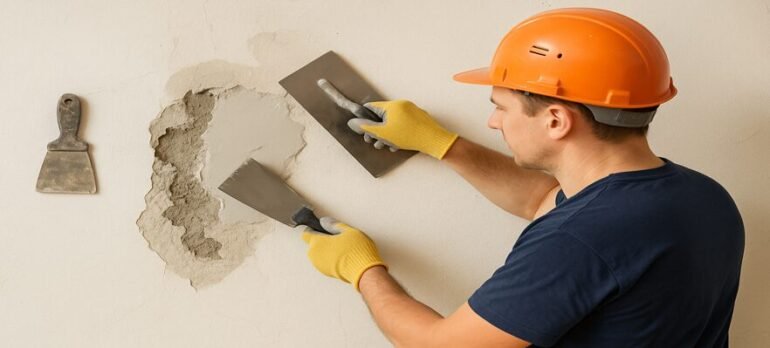
Plastering isn’t just about looks—it plays a key role in protecting your walls and ceilings. A well-plastered surface helps keep moisture out, prevents cracks, and makes spaces feel fresh and well-maintained. When handled by professionals, plastering can also increase your property’s value and help avoid costly repairs in the future. In this blog, we’ll walk through some common plastering problems and how skilled experts can solve them properly.
Why Good Plastering Matters
Think of plastering like a protective coat on your phone. Just like a case keeps your phone safe from cracks and drops, well-done plastering shields your walls from moisture, cracks, and everyday wear and tear. Whether it’s for a home or a commercial building, quality plastering also sets the stage for smooth painting or finishing work.
Good plastering:
- Prevents moisture damage
- Helps insulate walls
- Adds value to your property
Cracks in Walls and Ceilings
Cracks in plaster are a common issue, especially in older homes or buildings with shifting foundations. These cracks might seem small at first, but over time, they can grow and weaken your walls.
A professional team can identify the cause—whether it’s movement, poor materials, or moisture—and carry out repairs that last. If you’re also dealing with cracked exterior walls, it might be worth looking into weatherboard cladding services, which provide extra protection from outside conditions.
Water Damage and Mould Problems
Water leaks or long-term dampness can weaken plaster and even lead to mould growth. This is a serious issue—not only does it affect the wall’s structure, but it also poses health risks.
Professionals will assess the moisture damage, remove affected plaster, and apply mold-resistant materials. In some cases, improving drainage or exterior barriers may help too. If moisture is a recurring problem, you might also benefit from expert roof repair services to stop water from getting in at the source.
Uneven or Bubbling Surfaces
Sometimes plaster looks wavy, bumpy, or starts bubbling. This usually happens when it’s applied to a wet surface or not mixed properly.
To fix this, the surface needs to be scraped back and re-plastered using the right method. Skilled tradespeople will ensure it’s smooth and ready for paint. If you’re planning a bigger home refresh, this is also a good time to consider indoor painting services to complete the new look.
Final Thoughts: Fix Problems Before They Grow
Small plastering problems can turn into big repairs if ignored. Whether it’s cracks, bubbling, mould, or water damage, it’s best to get them fixed early. With the right help, your walls will stay strong, dry, and smooth for years to come.
Contact Quik Solutions today, and let’s get your property back in top shape.


